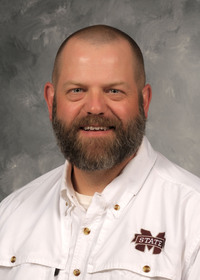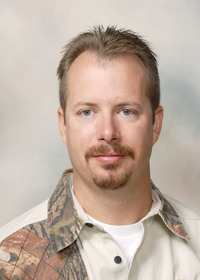The Role of Genetics and Nutrition in Deer Management

At some point in our lives, we’ve all heard the saying, “You are what you eat.” Most people were taught to eat their vegetables and minimize their consumption of junk food. This concept applies equally well when managing the habitat that will provide deer their food.
Research has clearly shown that proper nutrition for white-tailed deer is important in expressing the genetic potential for body growth and antler size. Yearling bucks raised on a 16 percent protein diet grew antlers twice as large as yearlings raised on 8 percent protein; when continued, Boone and Crockett score at 4 years of age was 20 inches larger in the 16 percent protein group.
The facts are clear: To produce the best-quality deer, you must provide them with the opportunity to forage on the best-quality plants. Maintaining appropriate deer density, practicing active habitat management, and planting supplemental forages are tried and true methods of improving diet quality for deer. These actions will increase body and antler size of deer on a property.
Recent research has shown that deer are more than just a product of what they eat. They’re also a product of what their parents and grandparents ate. The Mississippi State University Deer Lab’s latest research has discovered that deer body and antler size are also regulated by a phenomenon called epigenetics. Before we explain this exciting new phenomenon, let’s go back to the beginning of our cooperative research project between the Mississippi Department of Wildlife, Fisheries, and Parks (MDWFP) and the MSU Deer Lab, which is part of MSU Extension and the MSU Forest and Wildlife Research Center.
Extreme Regional Variation
It’s no surprise to Mississippi deer hunters that antler and body size differ among the state’s soil regions. The Delta region tends to produce the largest bucks, whereas hunters harvest the smallest deer in the Lower Coastal Plain (LCP) region and medium-sized deer in the Thin Loess region. What is interesting is the extreme difference in body and antler size between the Delta and LCP regions—harvested Delta bucks are 41 pounds heavier and 25 inches larger in Boone and Crockett score than LCP bucks at 3 years of age (Figure 1). Fully understanding the causes of this pattern has been a long-term quest of the Deer Lab.



We expected that soil quality and land use decisions would impact deer growth potential by affecting the amount and quality of available forages for deer (Figure 2). The Delta region is home to large acreages of agriculture that provide an almost unlimited amount of high-quality food for deer. Although a nuisance for some farmers, deer populations find an excellent summer forage supplement with soybeans, and wheat is often available during fall and winter. In the LCP, the most common land use is timber production because of the low-quality soil in that region. Timber production can be a great source of revenue for the landowner, but how the timber is managed will have a pronounced effect on the amount of deer forage produced. Maximizing timber revenue will decrease the amount of deer forage produced. When forest canopies are dense and do not allow sunlight to hit the ground, deer forage will disappear.

Although regional differences in body and antler size of deer in Mississippi are related to soil quality and land use, we could not ignore the concern that smaller antler size in some regions was due to genetic limitations in antler potential. These concerns were supported by earlier research that differentiated two subspecies of white-tailed deer within Mississippi. Most of the state falls within the described range of Odocoileus virginianus virginianus, the Virginia white-tailed deer, but deer in the southern portion of Mississippi are classified as Odocoileus virginianus osceola because of their smaller size.
Adding to the potential confusion regarding variation in genetics was the successful deer restoration effort by the MDWFP. Prior to the 1940s, much of the southeastern United States was devoid of deer, so wildlife agencies spent decades stocking deer throughout their respective states. The MDWFP released more than 3,000 deer, with some coming from as far away as Wisconsin and Mexico. The MSU Deer Lab has confirmed that some differences in the genetic “signatures” of current Mississippi deer populations correspond to the restocking program, but there is no evidence that Wisconsin deer ever contributed to the current gene pool.
Genetic information within a deer’s DNA plays a significant role in body and antler development. The basic genetic model is that individuals inherit genes from their parents (nature) that control their potential physical characteristics. And the environment experienced during life (nurture) affects how those genes are expressed. The combination of nature and nurture dictates what an individual looks like. For example, let’s say a buck’s genes are coded to potentially grow antlers with a 140-inch Boone and Crockett score and a body weight of 190 pounds. But, if the buck is born in an area with poor habitat quality and he consumes inadequate nutrition his entire life, he could be limited by his environment and only grow 120-inch class antlers and weigh only 150 pounds at maturity. This is a classic example of the basic genetic model showing how the environment influences the growth of an individual. If there were an actual genetic limit to body and antler size, then improved nutrition would not allow the osceola subspecies living in the LCP to compensate and grow as large as Delta deer.
Although the MSU Deer Lab has confirmed differences in genetic “signatures,” these differences are not necessarily related to the differences in body and antler size.

Is It Genetics (Nature) or Nutrition (Nurture)?
We needed a controlled scientific study to determine if differences in body and antler size across Mississippi were caused by differences in genetic potential or if they were a result of other factors, such as land use (i.e., deer food production). These environmental sources of variation could be reduced to one simple factor that we could control—nutrition. We needed to obtain samples of deer that represented the genetic variation within each of the three soil regions and raise offspring on an optimum diet.
The concept sounded fairly simple, but the application was an adventure! Over a 2-year period, MDWFP biologists and MSU Deer Lab graduate students captured pregnant females from the Delta, Thin Loess, and LCP soil regions of Mississippi (Figure 3) and brought them back to the MSU Deer Lab captive facility. Keeping these wild deer in captivity allowed us to control their diet. We hypothesized that if we fed all of these deer a highly nutritious diet but their body and antler size remained different, then we could conclude that regional variation is caused by genetic limitations. However, if deer with genetic backgrounds from regions with historically smaller body and antler size compensated and caught up to the bigger Delta deer when fed the same high-quality diet, we could conclude that nutrition is the ultimate cause of regional variation.

Wild-caught mothers gave birth to their fawns at the MSU Deer Lab captive facility. After fawns were weaned, the fawns all ate the same high-quality diet, and their mothers were removed from the study. So, unlike their mothers, this first generation of captive-raised Delta, Thin Loess, and LCP fawns all received the same high-quality diet. Each fall, we measured body weight and antler size for regional comparison.
We predicted our high-quality diet would allow Thin Loess and LCP deer to compensate for the lower-quality nutrition of their homelands and grow larger. But would they grow as large as Delta deer, our “gold standard” for body and antler size in Mississippi?
First-Generation Results
Being raised on optimum nutrition caused a moderate increase in growth of first-generation bucks compared to their wild predecessors (Figure 4). Over all three regions, body and antler size increased about 6 percent, but the pattern was not consistent among regions. Body weight for 3-year-old bucks from the Delta and Thin Loess increased by 9 pounds, but LCP bucks remained essentially unchanged compared to their wild counterparts roaming the nutritionally deprived region of south Mississippi. Antler score was a different story. Bucks from the Delta remained essentially unchanged, whereas Thin Loess bucks and LCP bucks increased 7 inches more than their wild predecessors.


Second-Generation Results
The second generation was composed of deer born to mothers raised in our research pens on the optimal, high-quality diet. That is, they are offspring of the first-generation deer (remember, the first-generation deer were all raised on the same high-quality diet, but their mothers were raised in the wild).
We saw significant increases in the second generation! Results in Figure 5 show bucks from the Delta, Thin Loess, and LCP regions increased 32, 21, and 36 pounds, respectively, compared to the wild bucks from their respective regions—that’s a whopping 18 percent improvement! The second-generation LCP bucks grew body weights equivalent to wild bucks from the Delta region. Antler size displayed the same trend. Bucks from the Delta, Thin Loess, and LCP regions increased 5, 11, and 28 inches, respectively, compared to the wild bucks (Figure 5). The 28 inches for LCP bucks was an amazing 32 percent improvement compared to their wild predecessors.


For logistical reasons, we had to end the study when bucks were 3 years old, but that’s not the end of the results. We are able to predict antler size at maturity based on growth rates from our other studies. The average antler size at 3 years of age for a first-generation LCP buck was 95 inches. Using this score as a basis for our prediction, first-generation LCP bucks would score about 122 inches at 6 years of age. This means that, after one generation of improved nutrition, LCP bucks are almost reaching the minimum requirements to be entered into the Pope and Young record books (125-inch minimum). The average antler score of the second-generation bucks was 116 inches. Again, using this score as a basis for our prediction, second-generation LCP bucks would score about 147 inches on average at 6 years of age.
It Runs in the Family
First and foremost, you are what you eat—but you’re also what your mother and her mother ate! Our results clearly show that deer in the LCP region of Mississippi are not genetically doomed to have smaller bodies and antlers; they are simply a product of their environment. Once nutrition was improved, LCP bucks started to display their genetic potential—but it took time. We feel confident that what we found was an epigenetic effect.
This new epigenetic phenomenon explains how one’s DNA can remain the same while its expression is altered by environmental conditions. One way to think about it is a series of switches within an animal’s genes. If generations of a family have lived in a low-quality habitat, then it’s advantageous to “turn off the switch” for the genes that promote a large body and antlers—the advantage is that smaller animals are better suited to the quality of forage in their environment. This “off switch” keeps animals from growing larger in a particularly good year, only to be hurt when forage quality returns to normal. Therefore, this new epigenetics model shows that, in addition to the environment a buck experiences during his lifetime, the habitat quality experienced by his parents and grandparents also is critically important!
This is a remarkable discovery and explains the variation we see in body and antler size far better than the basic genetic model. It is nature’s way of allowing deer (and other animals) to adapt to their environment.
Although the first generation of bucks was raised on the same optimal diet, certain genes that code for growth were not “switched on.” Their mothers had passed along a signal to their genes that essentially said, “Don’t grow as big as you can because the environment simply won’t support it” (there’s a disadvantage to being too big when food is limited).
However, by the second generation, these genetic switches were turning on and signaling to the genes that it was now safe to grow larger because the mothers had good nutrition. This can be thought of as the mother “inheriting” her environment. If a mother inherits a high-quality environment, then she will pass that along to her fawns, and the same will occur if she inherits a low-quality environment.
The deer of the Delta region exhibited a second important genetic result. We considered our Delta deer to be the gold standard for body and antler growth by white-tailed deer in Mississippi. Yet, we observed a 32-pound increase in body weight and a 5-inch increase in antler score. These results prove that even deer in the Delta are not attaining their full potential in the wild and could benefit from improved habitat quality.
From Deer Research to Deer Management
There are three take-home messages from this research:
- Stop worrying about genetics! Although genetics do control body and antler growth of individuals, they are not the cause of regional variation in body and antler size. Besides that, our other research has proved that genetics cannot be managed in free-ranging populations.
- Focus on nutrition. These results are empowering because they show a clear link between body and antler quality and nutrition, which is something you can improve on your property. Habitat management and supplemental food plots will yield results.
- Be realistic about expectations because big changes take time. We live in a society where everything is at our fingertips. If we want it now, we can have it now. This mindset should not be carried over into deer management. Although individual deer will respond to increased nutrition in the short term, it will take 5 to 10 years of consistently improved nutrition for the “genetic switches” to be turned on and stimulate greater expression of their genetic potential. Once turned on, you will see far greater improvements at the population level.
Flipping the Switch
Maintaining Appropriate Deer Densities
As a landowner or manager, the first things you can do to begin turning those genetic switches on are maintaining an appropriate deer density and improving nutrition. By maintaining appropriate densities, you are essentially balancing the number of deer on a property with the resources available for those deer. Having too many deer degrades the nutritional quality of their habitat.
The solution is to increase harvest of does and perhaps of bucks, but how do you know how many you should harvest? It is best to work with a deer biologist to determine appropriate harvest rates that correspond with your management objectives. Conducting a camera survey is a great way to monitor deer densities on individual properties or cooperatives that are 1,000 acres or larger. Camera surveys also can help you calculate recruitment rates and establish a “harvest list” for the bucks on your property. For more information on conducting camera surveys, see MSU Extension Publication 2788 Conducting Camera Surveys to Estimate Population Characteristics of White-Tailed Deer.
Habitat Management
In addition to maintaining deer density within the nutritional carrying capacity, active habitat management is a critical step. Habitat management will ensure that there is an abundance of natural broadleaf, herbaceous plants (forage) available to the remaining deer on a property. Nature has given you the seed for these plants; you just have to prepare a spot for them to grow. You can accomplish this through disturbance, like disking and burning, and by managing the canopy of your forestland.
Deer forage needs sunlight! Shady forests provide very little forage for deer. So work with a registered forester to thin timber stands as soon as possible, apply herbicides to control woody vegetation (if needed), and, finally, incorporate a prescribed-burning program. Once you have created good deer habitat, supplement with food plots. Many hunters do a good job of planting cool-season food plots, but few develop a good warm-season program. Keep in mind that both antlers and fawns are being grown during summer, so this is a critical time for deer to have good nutrition and to switch those growth genes on!
Many landowners and managers overlook the importance of habitat management. But remember, body weight and antler size increased for deer from all three soil regions in our study, including the Delta. This means that nutrition is lacking even in high-quality areas. If you aren’t engaging in active habitat management, there is still room for improvement on your property.
Deer management is a lot of work, but we hope this information helps you to better manage your property and reach your deer management goals.


Thank you to the following reviewers of this publication:
Mark D. Smith, Associate Professor/Extension Specialist, Alabama Cooperative Extension System, School of Forestry and Wildlife Sciences, Auburn University
Craig A. Harper, Professor of Wildlife Management/Extension Wildlife Specialist, University of Tennessee
Citation: Michel, E., S. Demarais, B. Strickland, A. Blaylock, W. McKinley, C. Dacus, and B. Hamrick. 2017. The Role of Genetics and Nutrition in Deer Management. Mississippi State University Extension Service Publication 3013.
Publication 3013 (POD-02-24)
By Eric Michel, Graduate Research Assistant, MSU Wildlife, Fisheries, & Aquaculture; Steve Demarais, Professor, MSU Wildlife, Fisheries, & Aquaculture; Bronson Strickland, Associate Extension Professor, MSU Wildlife, Fisheries, & Aquaculture; Amy Blaylock, Wildlife Bureau Director, Mississippi Department of Wildlife, Fisheries, & Parks; William McKinley, Deer Project Coordinator, Mississippi Department of Wildlife, Fisheries, & Parks; Chad M. Dacus, Extension Instructor, MSU Center for Resolving Human-Wildlife Conflicts; and Bill Hamrick, Senior Extension Associate, MSU Wildlife, Fisheries, & Aquaculture.
The Mississippi State University Extension Service is working to ensure all web content is accessible to all users. If you need assistance accessing any of our content, please email the webteam or call 662-325-2262.






